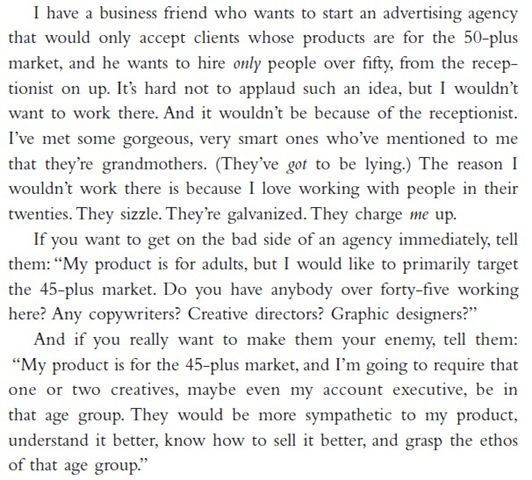Way back in 2006 I was part of a private marketing seminar for AstraZeneca’s Crestor:
 The day was productive and fun. The three ‘experts’ were Dr. Coughlin, John Page from Yankelovich, and you-know-who. The numbers-cruncher wore a very conservative, gray suit, the academic a dark pinstripe and loud bow tie, and the ad guy a mock turtleneck and over-the-top orangey sport coat.
The day was productive and fun. The three ‘experts’ were Dr. Coughlin, John Page from Yankelovich, and you-know-who. The numbers-cruncher wore a very conservative, gray suit, the academic a dark pinstripe and loud bow tie, and the ad guy a mock turtleneck and over-the-top orangey sport coat.
We were straight from central casting.
The night before I had dinner with a gentleman from Commonhealth and the Brand Manager of Crestor®. Of course, I’d done homework. Three points I made:
- Boomers want information. I found out more about the active ingredient (Rosuvastatin) and how it works from Wikipedia than I did on the Crestor web site.
- Feel-good advertising is fine, but make sure the commercial pushes you to the web site for more information – and the information is there.
- You should produce a computer-animated ‘fly-through’ video of arteries showing how and why Crestor works.
 The other night I saw a Crestor spot with a man in his fifties explaining a bit about the medication, and pushing viewers to the Crestor web site to view an animated video about how Crestor works.
The other night I saw a Crestor spot with a man in his fifties explaining a bit about the medication, and pushing viewers to the Crestor web site to view an animated video about how Crestor works.
I can’t find the television spot on the web, but did find the animated video:

Take an interactive artery tour …
___
My colleagues, heroes, and brothers in troublemaking Brent Green and Dick Stroud have been all over a bunch of campaigns that use the perennial ‘time machine’ technique:
Some target 50+, one should but doesn’t, one (or maybe two) are age-neutral. You decide:
Bacardi Rum Mojitos, Marketing Missteps, Boomers and Social Justice
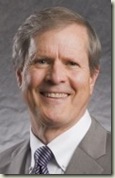 Take another look at the commercial and now scrutinize for diversity. You’ll see Caucasians, Latinos and African Americans. You’ll certainly see a balance of gender, as you would expect for a nightclub evolving backward through the fourth dimension (of time). What you won’t see is anyone over the age of 40 (more likely 30) — neither in the present nor in the distant past where the thirsty customer finally gets his freshly mashed mojito.
Take another look at the commercial and now scrutinize for diversity. You’ll see Caucasians, Latinos and African Americans. You’ll certainly see a balance of gender, as you would expect for a nightclub evolving backward through the fourth dimension (of time). What you won’t see is anyone over the age of 40 (more likely 30) — neither in the present nor in the distant past where the thirsty customer finally gets his freshly mashed mojito.
 The more retro the better?
The more retro the better?
Retro advertising is back with a vengeance … I suspect you can have a bit too much of retro, even for the over-50s market.
The M&S spot is my favorite:
Probably because Twiggy is sexier and more fun now then way back when – and I chortled at the cheeky nod to a classic spot for Levi’s:
An entrepreneurial boom is on its way, but don’t expect it to be led by 20-somethings. Instead, America’s best economic recovery plan is in the hands of those aged 50 and up, according to a recent study by the Kauffman Foundation.

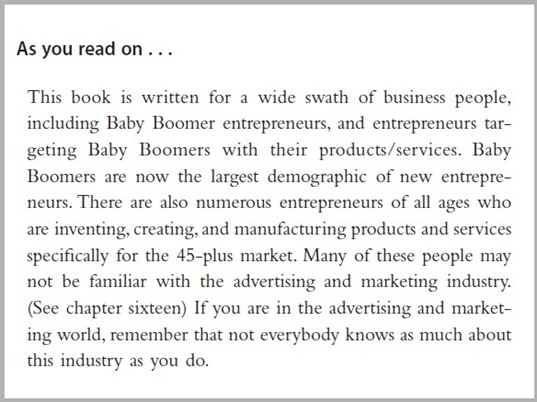
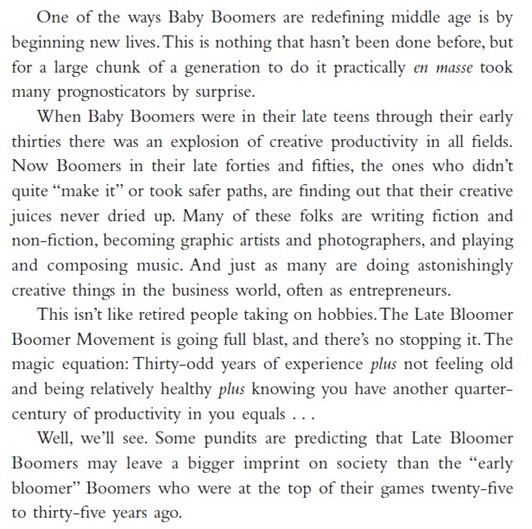
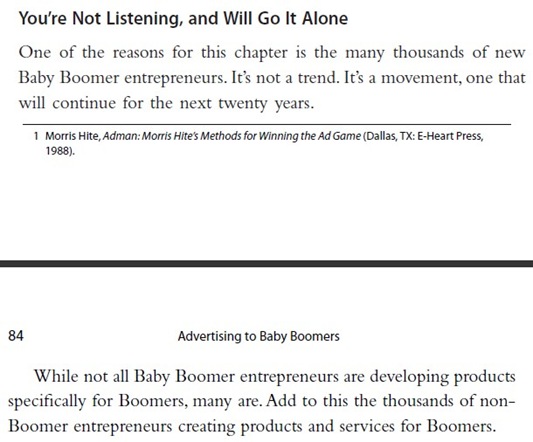
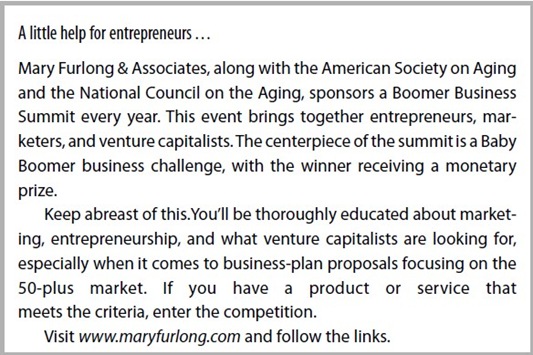

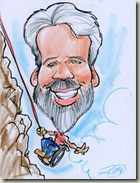







 Marti Barletta
Marti Barletta

